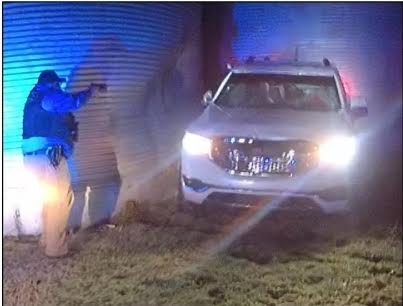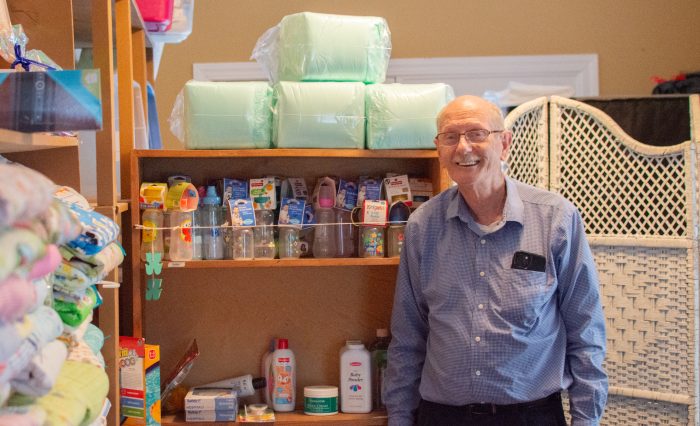City seeking niche spaces for Brownfield assessments
Published 6:00 pm Friday, October 18, 2019

- The former location of Honey Krust Bakery is shown Friday at the corner of Adams Street and 14th Avenue.
The Honey Krust Bakery, at 1349 Adams St. near Western Kentucky University, is one of Bowling Green’s first completed “brownfield” projects. It sits next to the Hostess House, which formerly served as a prominent community event space.
In 1936, James Ingram designed the house in classic colonial revival style and the bakery in a streamlined moderne style with art deco accents. The bakery started producing honey-sweetened bread by 1937 and sent fresh loaves from Hopkinsville to Somerset.
Trending
But before it was a bakery, the site was a coal yard – so current owner John Ridley decided to assess the property with the city’s help. And it turns out there was no contamination.
“There’s a lot of fear and anxiety whenever you talk about environmental issues. Developers and business owners worry about the government ‘getting them,’ ” said Brent Childers, director of the city’s Neighborhood and Community Services department. “We were able to help (Ridley). Now he’s cleared to go on that site.”
Last October, the city received a $300,000 grant from the Environmental Protection Agency to perform assessments on properties with potential pollution, contamination or hazardous wastes. Developers that reinvest into these brownfields ultimately increase local tax bases and facilitate job growth while reducing their carbon footprint, according to the EPA, which estimates that there are more than 450,000 brownfields nationwide.
“Somebody imaginative can do something good with an old property,” said Matt Powell, the city’s environmental manager, who added that reutilizing existing infrastructure prevents wasting undeveloped green spaces typically further driving distances from city centers.
To expand, redevelop or reuse brownfields, the sites must first be analyzed in one of two options. There is a “phase one” option, which typically costs between $5,000 and $25,000, that involves conducting a visual assessment to check for soil staining, distressed vegetation and asbestos and to perform a historical investigation. For some properties, this is all they will need to do.
“Some have cleared with no environmental issues and stop at phase one,” Childers said. “We haven’t come across anything with a major environmental significance.”
Trending
For the “phase two” option, contractors sample concentrations of contaminants in the areas to be cleaned and also evaluate cleanup options and cost estimates based on future uses and redevelopment plans, according to EPA.
If environmental cleanup of lead paint, asbestos, petroleum or hazardous waste is needed, the property owners who have completed brownfield assessments will become eligible for additional EPA grants.
The city contracted with EnSafe, a local engineering and environmental consulting firm, to complete the assessments.
“Once those assessments are complete, they offer technical assistance to navigate next steps,” said Nick Cook, grants coordinator for the city of Bowling Green.
Initially, the city was producing property evaluations in six to eight weeks. But the program organizers quickly realized that developers run quick businesses – so they upgraded to a 30-day turnaround. (There’s an online form on bgky.org/brownfields that kick-starts the process.)
That haste of developers has proved to remain tricky, however.
“Many economic projects move too quickly to be interested, but properties interested in putting more care and thoughtfulness into renovations agree to these projects,” Powell said. “If they’re not interested in us, they’ll just bulldoze the property and start over.”
Thus far, the city has completed six phase-one assessments and one phase two on West Main and Gordon Avenue, which used to be a gas station and grocery and now might be sold for future redevelopment. The city is also in the process of completing an additional phase one and phase two.
The program is available citywide, but there is a focus on Bowling Green’s reinvestment area and opportunity zone. “That’s where properties with historic, brownfield (qualities) would have been built,” Childers said.
But the city actually needs more projects, particularly niche businesses that want to showcase unique aspects of historical structures.
They have until next October to use up the $300,000.
At this time, Environmental Protection Agency is accepting applications from local governments, nonprofits and quasi-governmental agencies for brownfield grants through Dec. 3. The Kentucky Energy and Environment Cabinet offers online resources for grant writing, and recommends that interested parties contact the Kentucky Brownfield Redevelopment Program staff at eric. eisiminger@ky.gov or elizabeth.mcnulty@ky.gov.






